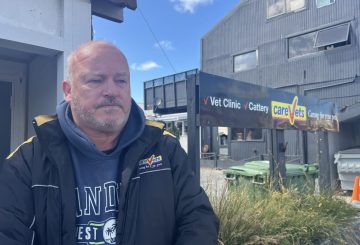집을 얼마나 깨끗하게 청소해야 하는지 자주 걱정하는 세입자에게 임대차 검사는 성가신 일일 수 있습니다.집주인이나 숙소 관리자는 청결 상태, 손상 여부, 가전제품의 작동 여부를 확인합니다.레이 화이트 (Ray White) 의 제시카 커리 (Jessica Currie) 는 임차인이 퇴실할 때 세입자가 부당한 클레임을 당하지 않도록 보호해 준
Renters United의 Zanian Steele은 일부 집주인, 특히 소규모 임대인은 자신의 책임에 대한 지식이 부족하다고 지적합니다.숙소 관리자는 점검을 할 때 전반적인 청결도를 확인하지만 호텔처럼 완벽할 필요는 없습니다.예를 들어, 약간의 부스러기나 약간의 먼지는 괜찮습니다.
하지만 세입자가 이사할 때는 더 좋은 상태로 숙소를 떠나야 할 수도 있습니다.집주인은 검사 중에 사진을 찍을 수 있지만 필요한 경우가 아니면 개인 물품을 촬영해서는 안 됩니다.점검을 통해 임차인이 유지 관리 문제를 신고할 수 있는 기회이기도 합니다.
임대의 경우 오전 8시에서 오후 7시 사이에, 하숙집의 경우 오전 8시에서 오후 6시 사이에 검사를 실시할 수 있습니다.검사를 받기 최소 48시간 전에 임차인에게 알려야 합니다.또한 임차인은 건물 외부를 청소할 필요가 없어야 합니다. 이는 집주인이 해야 할 일입니다.
세입자가 애완동물을 키우거나 특정 방식으로 건물을 사용하는 경우 특정 구역을 청소해야 할 수도 있습니다.예를 들어 BBQ로 인해 데크가 엉망이 된 경우 임차인은 해당 구역을 청소하도록 요청받을 수 있습니다.
숙소 관리자는 찬장을 열어 누수 여부를 확인할 수 있지만 임차인의 사생활을 존중해야 합니다.개인 물품이 보관되어 있는 장소를 확인하고 싶으면 집주인이 세입자에게 알리는 것이 중요합니다.
임차인은 임대차 계약서에 명시되어 있지 않는 한 전문적인 청소 비용을 지불하도록 강요받아서는 안 되며, 건물의 정상적인 마모에 대해 걱정할 필요가 없습니다.마모된 바닥재나 정기적인 사용으로 인한 경미한 얼룩과 같은 문제는 정당한 마모로 간주되지만 의도적인 손상은 그렇지 않습니다.
임차인은 권리를 이해하고 집주인과 소통하는 것이 매우 중요합니다.모든 문제는 사진과 이메일로 기록해 두어야 합니다.해결할 수 없는 문제가 발생할 경우 세입자는 시민자문국 또는 임차인 재판소에 도움을 요청할 수 있습니다.
정기 검사를 통해 재산이 어떻게 관리되고 있는지 추적할 수 있으며 세입자를 불공정 청구로부터 보호할 수 있습니다.이를 통해 모든 마모를 확인할 수 있어 임차 종료 시 예상치 못한 상황을 피할 수 있습니다.



















































-360x245.jpg)










